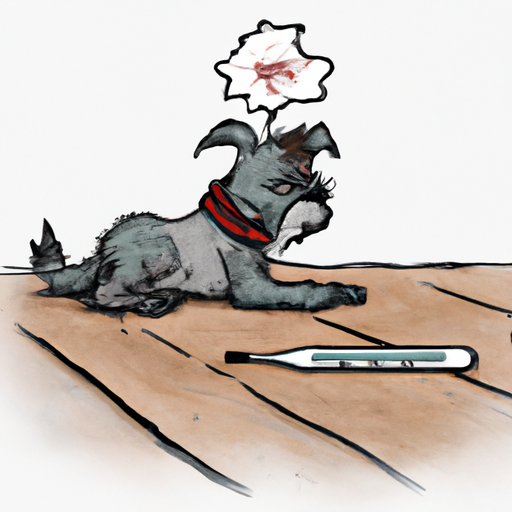As a dog owner, you naturally want the best for your furry friend. This includes ensuring their comfort and safety during those daily walks that both of you enjoy. But what happens when the sun has been beating down on that pavement all day, and the temperature is soaring? Just how hot is too hot for your dog to walk on pavement without hurting their sensitive paws?
Table of Contents
- Understanding the Dangers of Hot Pavement
- How to Test the Pavement Temperature
- What Temperature is Too Hot?
- Alternatives to Walking on Hot Pavement
- Frequently Asked Questions
Key Takeaways
- Extreme heat can cause severe burns on your dog’s paws
- Test the pavement by touching it with your hand
- Temperatures as low as 77 degrees Fahrenheit can cause burns
- Consider alternatives such as grassy areas, dog boots, and early morning or evening walks
Understanding the Dangers of Hot Pavement
The first thing to understand is why hot pavement can be so dangerous for your dog. Dogs’ paws, though tougher than human feet, are still sensitive. They can sustain burns from a hot pavement, causing severe pain and potentially leading to infection.
According to a study by the Journal of the American Veterinary Medical Association, the risk of burns increases significantly when the pavement temperature reaches 120 degrees Fahrenheit. In fact, skin destruction can occur in just 60 seconds at this temperature. Here’s an article that further discusses the study.
How to Test the Pavement Temperature
So, how can you tell if the pavement is too hot for your pooch? A simple and effective method is the hand test. Place the back of your hand on the pavement, and if you can’t keep it there for at least five seconds, it’s too hot for your dog’s paws. This is a tried and true method recommended by many veterinarians, including those at Vetstreet.
What Temperature is Too Hot?
When the air temperature is 77 degrees Fahrenheit, the asphalt can already be 125 degrees. At 87 degrees Fahrenheit, the pavement can heat up to 143 degrees. These temperatures can not only cause discomfort but can also lead to burns, as mentioned earlier.
| Air Temperature (F) | Asphalt Temperature (F) |
|---|---|
| 77 | 125 |
| 87 | 143 |
Avoiding hot pavement is one of the best ways to keep your dog safe during walks, especially during hot summer months. This blog post from One Top Dog provides more tips to keep your dog’s paws safe.
Alternatives to Walking on Hot Pavement
What can you do when it’s too hot to walk your dog on the pavement? Here are some alternatives:
- Walk in the early morning or evening: These are the coolest parts of the day when the sun isn’t directly heating the pavement.
- Find grassy areas: Grass doesn’t heat up as much as asphalt or concrete, making it a safer option for your dog’s paws.
- Use dog boots: These provide a protective layer between your dog’s paws and the hot pavement.
Remember, it’s crucial to acclimatize your dog to wearing boots before embarking on long walks.
Frequently Asked Questions
Q: What temperature is too hot for dogs to walk on pavement?
A: If the air temperature is above 77 degrees Fahrenheit, the pavement can be too hot for your dog’s paws. Always do the hand test before you take your dog for a walk.
Q: How can I protect my dog’s paws from hot pavement?
A: Consider walking in the early morning or evening, finding grassy areas for walks, or using protective dog boots. You can also apply a paw balm to provide some relief and protection.
Q: Can dogs handle hot pavement better than humans?
A: While dogs’ paws are tougher than human feet, they can still sustain burns from hot pavement. Always be mindful of the pavement temperature and look out for signs of discomfort from your pet.
In conclusion, looking out for your dog’s welfare includes being mindful of pavement temperatures during walks. With a little precaution, you can ensure that your furry friend enjoys their walks without the risk of painful burns.



